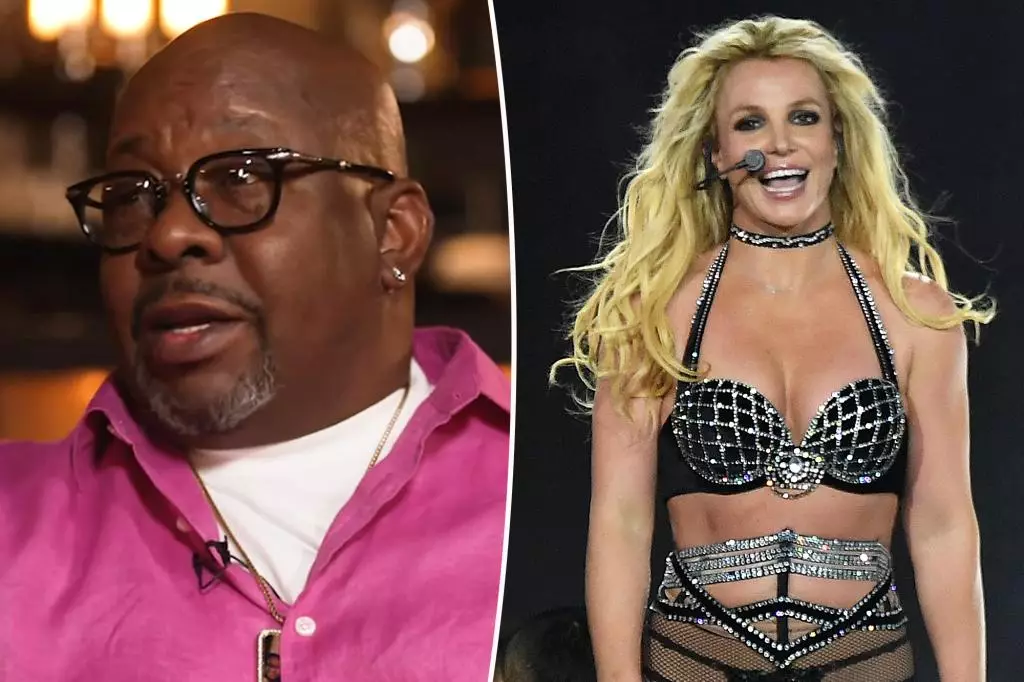In the ever-evolving landscape of popular music, a cover can make or break a song’s legacy. Bobby Brown’s recent remarks regarding Britney Spears’ rendition of his 1988 classic, “My Prerogative,” exemplify the complexities and sensitivities surrounding musical interpretations. Brown didn’t hold back when discussing his feelings on the “Club Shay Shay” podcast, labeling Spears’s cover as a “butchering.” His raw honesty shines a light on the challenge artists face when their work is reimagined by others, especially when the reinterpretation belongs to a figure as iconic as Spears.
Although Brown cleared the cover for release, his disappointment signifies a common conundrum: the expectations of an original artist when entrusting their work to another. By acknowledging that he gave his consent solely because of Spears’s status in the industry, he unwittingly sets the stage for debates about artistic ownership and authenticity. The music world is rife with differences in interpretation, but Brown’s outspoken critique raises questions about what responsibility original artists have in the aftermath of a cover.
The Twitter Backlash: A Cultural Reflection
Interestingly, the reactions to Brown’s comments showcased a broader cultural sentiment. Fans took to social media platforms, particularly X, to either defend Spears or call out Brown for what they perceived as an irrelevant criticism aimed at garnering attention. Comments such as “Bobby Brown, on the brink of being forgotten,” reflect a growing trend where artists leverage controversies involving younger stars to maintain their own relevance. In an age where “being talked about” aligns with staying relevant, Brown’s harsh critique could be interpreted as an attempt to recapture the spotlight in a world increasingly dominated by new voices.
Furthermore, fan responses indicating that “Britney’s version is absolutely incredible” underscore a generational divide in music appreciation. The landscape has transformed dramatically since the late ’80s, and fans today often prioritize production quality, style, and the artist’s capacity to resonate with contemporary issues over the nostalgia of a song’s original rendition. The implications of this shift are vast; artists like Spears reflect the cultural zeitgeist in ways that older generations may not fully appreciate, leading to a disconnection between original creators and newer audiences.
Lessons Learned: Ownership in Art
Brown’s reflections suggest a deeper lesson about ownership and authority in the music industry. He articulated the need for original artists to listen before granting permission, hinting at a shattering of trust that often exists between an original creator and a new artist. The music industry operates within a framework that can feel increasingly tenuous, where the reimagining of a song might evoke pride in some but disappointment in others. Each cover carries the weight of the original’s legacy, which can feel burdensome for artists who have poured their souls into creating something unique.
As this conversation continues, one is left to ponder the evolving definition of artistry in an era dominated by remix culture. The intersection of classic hits and modern interpretations raises essential questions: Are we witnessing a dilution of artistic expression, or merely an evolution that demands we rethink what it means to be an artist today?
In an industry where every cover or remix has the potential to provoke viral discussions, one wonders how these conflicts will shape future collaborations and artist relationships. Brown’s experience with Spears’s cover serves as a poignant reminder that the proverbial footprints left by artists in the sands of music are as complex as the songs themselves.
